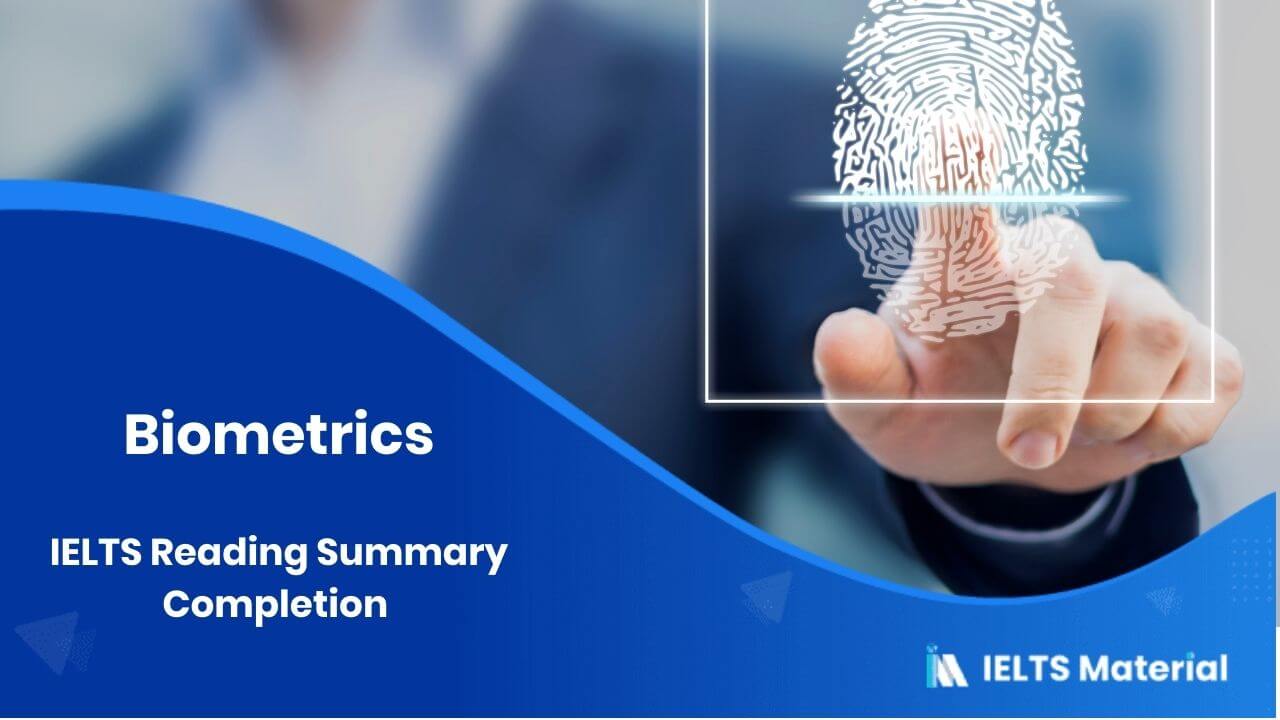IELTS Reading Summary Completion Topic 10
Table of Contents

Limited-Time Offer : Access a FREE 10-Day IELTS Study Plan!
Biometrics
Until the late 1800s, identification largely relied upon ‘photographic memory.’ In the 1890s, an anthropologist and police desk clerk in Paris named Alphonse Bertillon sought to fix the problem of identifying convicted criminals and turned biometrics into a distinct field of study. He developed a method of multiple body measurements which was named after him – Bertillonage. Bertillon based his system on the claim that the measurement of adult bones does not change after the age of 20. His system was used by police authorities throughout the world, until 1903, when two identical measurements were obtained for two different persons at Fort Leavenworth prison. The prison switched to fingerprinting the following day and the rest of the world soon followed, abandoning Bertillonage forever. After the failure of Bertillonage, the police started using fingerprinting, which was developed by Richard Edward Henry of Scotland Yard, essentially reverting to the same methods used by the Chinese for years.
For security reasons, often two, or all three, of these systems are combined but as times progress, we are in constant need for more secure and accurate measures. Authentication by biometric verification is becoming increasingly common in corporate and public security systems, consumer electronics and point-of-sale applications. In addition to security, the driving force behind biometric verification has been convenience. Already, many European countries are introducing a biometric passport which will carry a paper-thin computer chip to store the facial image and at least one additional biometric identifier. This will help to counter fraudulent efforts to obtain duplicate passports and will verify the identity of the holder against the document.
Questions 1-4
Compute the summary from the list of words A – L below.
Write the correct letter A-L in blank spaces next to 1-4 below.
As long ago as the 14th century, the Chinese made use of biometrics in order to tell young children apart, but it was only in the 1890s when it was first used by the authorities as a means of 1………………………… in criminal cases. The system developed by the Frenchman Bertillon – that of measuring adult bones – was flawed, however, and so police adopted 2………………………… as a more reliable way of identifying suspects. Apart from security, another important 3………………..behind biometric verification has been 4………………………….
| identification | security | convenience | scanning |
| fingerprinting | identity | violation | measuring |
| justification | approval | factor | apprehension |
Answers
|
Explanation
Unlock Explanation
Now, could you guess the reason behind the answers?
| For the first question, in the first paragraph, the word “identification” appears in the original.
For the second question, in the first paragraph, the word “fingerprinting” appears in the original. For the third question, in the second paragraph, the words “driving force” have been used; however, since it isn’t available in the box, the closest word was “factor” meaning quite the same. For the fourth, the word “convenience” appears in the original text in the second paragraph. |
Also check:
Practice IELTS Reading based on question types

Start Preparing for IELTS: Get Your 10-Day Study Plan Today!
Recent Articles

Nehasri Ravishenbagam

Haniya Yashfeen

Haniya Yashfeen

Haniya Yashfeen




Post your Comments